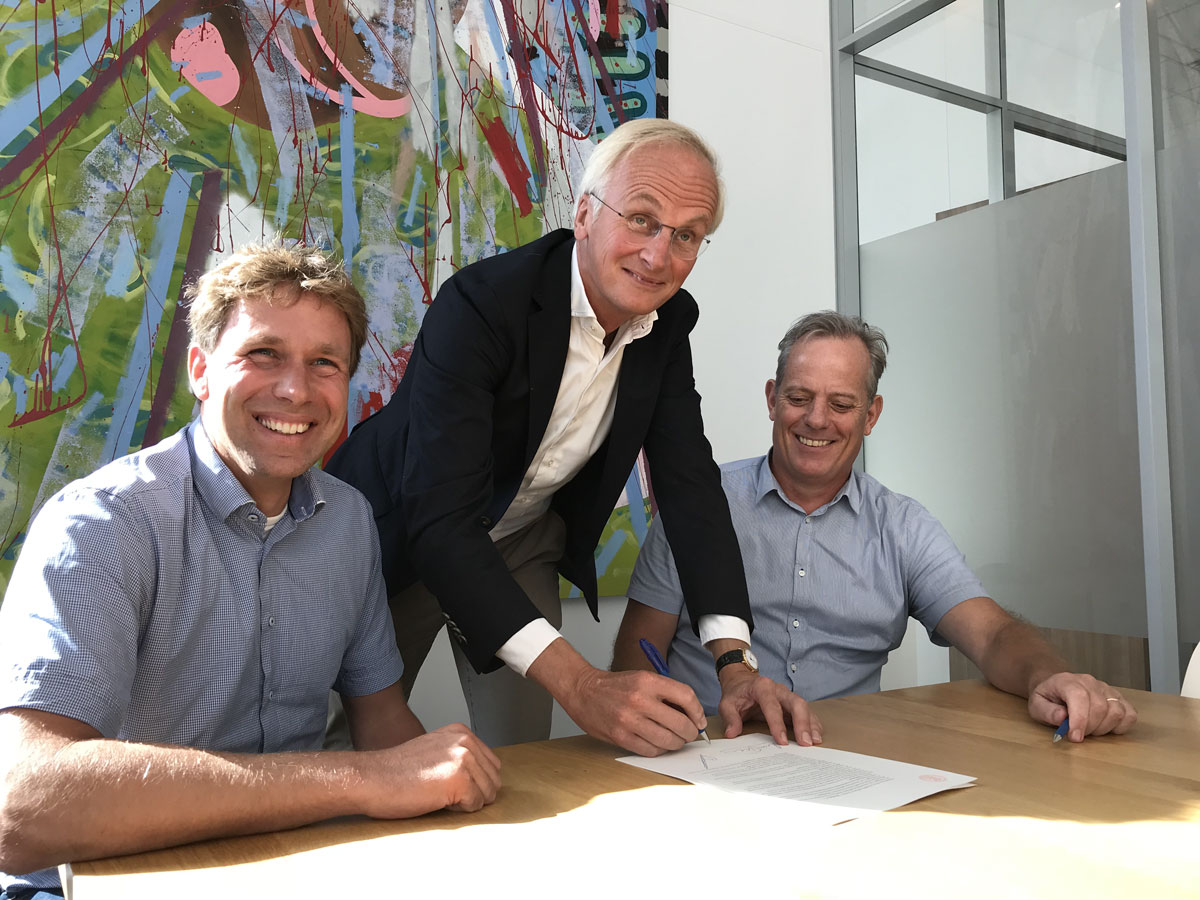 |
Michiel van Oers has been appointed as the new general manager of T&A Survey. Michiel has been working at T&A for many years and now takes over from Rober van Ingen, who founded T&A in 1992. Both now own one third of the shares. Investor MBO & Groei Fonds also participates for one third.  |
 |
While the Netherlands suffered from a long and hot summer, T&A performed a seabed survey at two differrent locations to identify obstacles (potential UXO) that could pose a danger during sand extraction and the construction of a wind farm. In both projects we used a combination of geophysical techniques, resulting in a detailed picture of the sediment. Unfortunately, only the equipment was allowed to go overboard! |
 |
In July our historical research specialist Jeroen Niels traveled to London to visit The National Archives for a perliminary UXO investigation. The National Archives manages a large number of official documents from the United Kingdom. The oldest pieces date back more than a thousand years. |
 |
On April 27th, the Trias Westland geothermal drillings arrived at the final depth of 2500 meters! The production test will tell how much water and heat the system will be able to produce. Based on the outcome, the number of horitculture companies which can be provided with sustainable heat will be determined. |
 |
T&A has performed a non-proprietary study into the potential and the risk of Ultra Deep Geothermal Energy (UDG) in the Netherlands. The emphasis is on the Dinantian Limestone, a promising reservoir for UDG at a depth of about four kilometers. For UDG we are looking for temperatures of at least 150 °C. Such temperatures are not feasible for current geothermal systems in the Netherlands, but are essential for various industrial applications and for the production of electricity. Based on the results from these studies and the detailed risk matrix, we have mapped the potential and the risk of UDG for the entire country. |
 |
February 28 Trias Westland performed the production test in the Lower Cretaceous Reservoir. Water from a depth of 2.3 kilometers was pumped up. The test went very well. The hot water flowed very smoothly into the basin and the gas in the water was flared off. Samples have been taken and measurements have been made to determine, among other things, the pressure and temperature. With this information the project team can start with the realization of the heat network. The exact potential of the geothermal doublet will be known at the end of April, when the second well has been drilled and tested. |
 |
Trias
Westland will realize a geothermal project in the Lower Cretaceous layer, which
is located at a depth of approximately 2.7 kilometers. Other Westland geothermal
projects also extract their heat from
this layer. The
Triassic layer, located at a depth of 4 kilometers, turned out not to be
suitable for cost-effective heat recovery. The
Lower Cretaceous layer instead, or more specifically the Delft sandstone layer,
appears to be even better than originally thought.
|
 |
The drillings for the Trias Westland geothermal project have reached the Triassic layer. The third section was completed at the end of January. The casings have been placed and the borehole has been firmly cemented. This was the most exciting section of the project and, despite a number of technical challenges, it was completed successfully. |
 |
The Trias Westland drilling has reached a depth of approximately 3,600 meters. After some setbacks in December, the work is now proceeding relatively smoothly. And there is good news: the first measurements show that the Lower Cretaceous layer has a lot of potential for regular geothermal projects. |